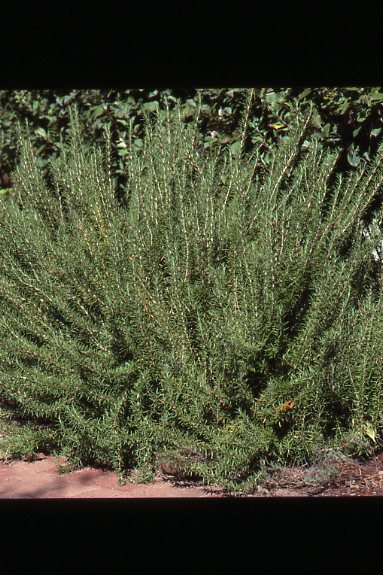 A more versatile herb than rosemary (Rosmarinus officinalis) would be hard to find. It is equally useful in the kitchen, the landscape, and the inside a home. Many legends have sprung up around this plant, giving it a reputation for medicinal, cosmetic, and even magical properties.
A more versatile herb than rosemary (Rosmarinus officinalis) would be hard to find. It is equally useful in the kitchen, the landscape, and the inside a home. Many legends have sprung up around this plant, giving it a reputation for medicinal, cosmetic, and even magical properties.
Like many other plants that are native to lands around the Mediterranean Sea, rosemary has strongly scented foliage and tolerates heat, drought, and poor soil. Although it is a woody, shrubby plant, it is not cold hardy in the northern areas of the US. In areas where the lowest winter temperatures fall below 20°F dig up rosemary plants and put them in pots to keep indoors over the winter. In warmer areas, such as the Deep South and Southwest, rosemary is a reliable, outdoor, evergreen landscape plant.
Size: Generally considered to be shrubs, the many types of rosemary grow from 1 to 6 feet tall and spread 12 to 24 inches.
Foliage: Rosemary’s dense, evergreen, needle-like leaves are ½ to 1 1/2 inches long. They are dark gray green with prominent midveins and smooth downward-curled edges; the undersides are fuzzy and silvery-white. They have a strong resinous fragrance, suggesting pine and camphor, especially when they are crushed. The woody stems have grayish, scaly bark. Most types of rosemary tend to grow semi-upright; the lower branches may droop to touch the ground unless pruned back.
Flowers: Rosemary bears small, two-lipped flowers clustered along the stems among the leaves near branch tips. Depending on the type, flowers may be lavender, blue, pink or white. They appear December through spring.
Rosemary
Read More:
The following questions were asked by visitors who viewed this page:
see all questions...
Do you have a gardening question? Ask Nancy

